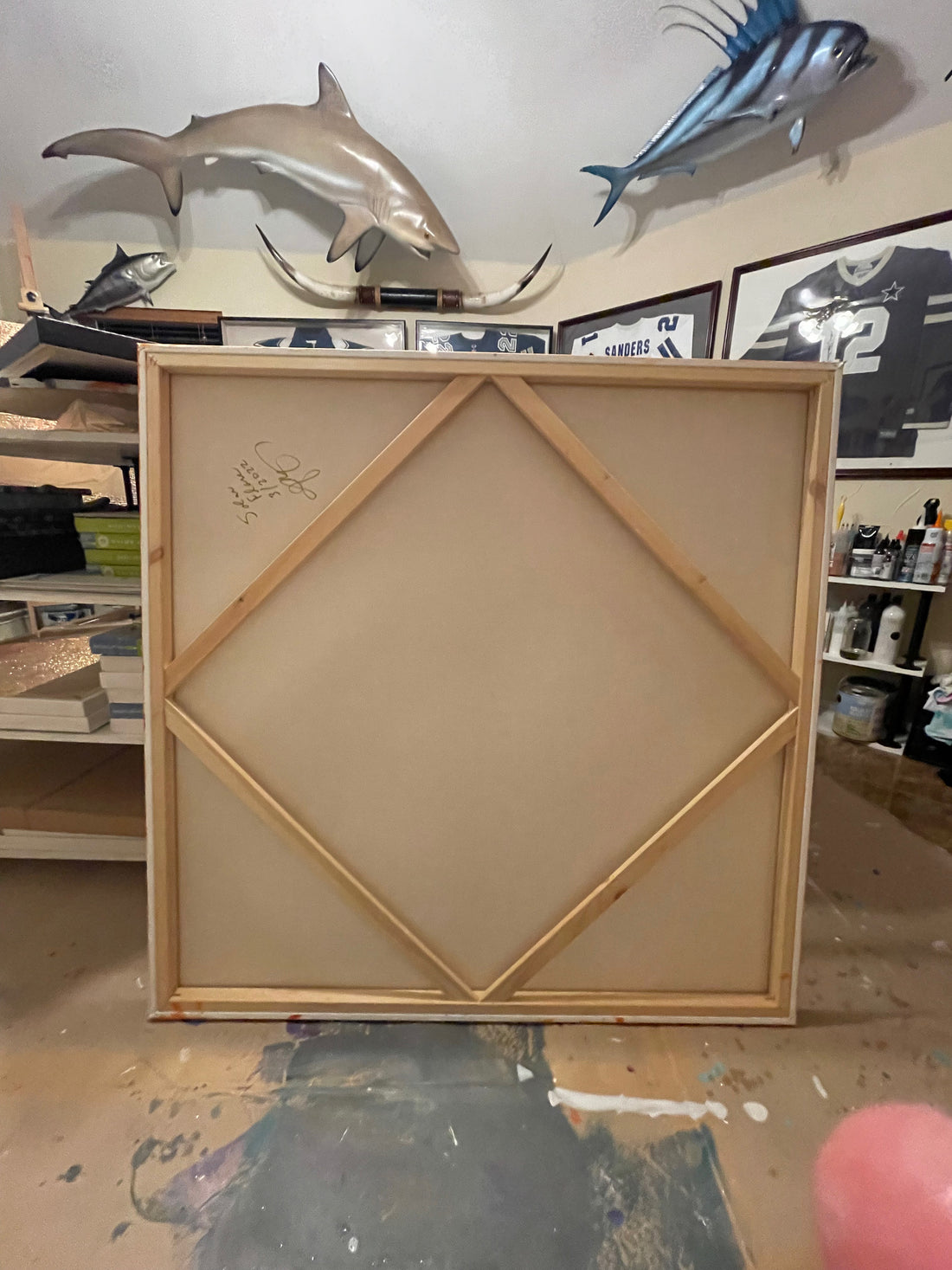
The Backside of a Painting ~ It Tells a Story

Painting is a process for every artist. Some painters plan everything out in advance. They pick the colors and canvas size and might even sketch out the design. Most painters have a "style" that they are comfortable and confident in presenting to the public for sale or show. You would be surprised by the amount of scraped paint because the painter is their worst critic. You would be even more surprised at the "final results" that are painted over by an artist. Art is subjective, and its appeal is only relevant to the buyer and artist. The same can be said about the selling price or value of a painting.
When I enter my studio, I slip into my painting shoes. My thought behind this is an attempt to reduce tracking glitter worldwide. I also change into painting clothes because there is no such thing as not coming into contact with something that will leave a mark. Even cleaning the studio makes a mess. 
I am not a planner when I paint. I don't even decide on the canvas size. I pull it out several sizes and start the preparation of the canvas to get a "feel" for how my creative juices are flowing. I love textured paintings. Using all types of materials to achieve different effects appeals to me. Unfortunately, there is a downside to this type of creative process. The backside of my paintings tends to be somewhat of a mess but tells an interesting story.
My "process" tends to move the canvas around my studio. I might start a painting on my easel for the background work, move it to my table to add dimensional effects and place it on my spinning table for detailed work. In some paintings, this process is completely reversed. Most of the time, I have three different paintings in "creation" at once. I don't take notes, and as of now, I don't record my creative sessions. What comes out of my studio may never be able to be recreated, and I like that. 
I have paintings that started in one color group and totally come out something altogether different, but I love it that way. I decided to change techniques or styles in the middle of the painting because I needed something else that day. My colors tend to be bold and, hopefully, overwhelming. I like to make a statement, and statement art is my niche.
I also stick to something other than typical artistic elements. If I can figure out how to attach an object or item to a canvas, I will use it in a painting. I only used archival forms of attachment, so my artwork can stand the test of time. Using non-traditional elements in painting tends to leave lots of my fingerprints on the backside of the canvas. I have tried laying down the details and then painting over the element. But mixing the element and wet paint results in greater dimensional effects. Painting is messing by its very nature, but when you start moving canvas with wet paint around to move the paint or add elements, it takes on another level of mess. 
There is much debate in the art world about how to finish the backside of a painting. I like my messy backsides. It tells someone the piece is unique and a one-of-a-kind creation. I do sign, title, and date all my pieces on the backside. I may not sign the front, which is very unpopular in the art world. As an artist, I see my painting one way, but a buyer may see it another way for them, which is perfectly okay. What I don't think is okay is for it to be hung in their home or office, and every time someone walks in, they say "Hey did you realize your painting is hung upside down because the artist's signature is in the top right have corner upside down?" I have seen this more than once but that painting works in that direction for that collector and they love it. In the end, it is about your client loving their painting because you might never see it again.
